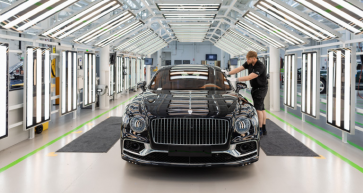
Further to last month’s article – you all remember last month’s article, right? Well, maybe just a quick update for the absent-minded then – car safety stemming, largely, from car-racing innovations. I did say I’d return to the subject and, being a man of my word.... So, without further ado, here’s a few more that have been introduced:
Transmissions – used to translate a car's engine power into the wheels; a manual method is slow and an automatic method takes driver control away. Hello direct-drive gear boxes. These are clutch-free and allow a driver to change quickly and correctly. You can see paddle shifts in cars now that also stop you changing non-sequentially, which could be a disaster when racing.
Tyres – a component of our cars that we generally don't think much about, perhaps until you get a flat? Yet, it's the only thing between you and the road. The design of grooves and materials used to maintain road contact and control in racing cars has filtered down to our cars also.
Brakes – engineers have had to design brakes to bring a racing car from extreme speeds to full stop. This has evolved from drum brakes to disc brakes which are easier to keep cool. Today, most production cars have either two- or four-disc brakes.
Air intake – engines need to breathe and, quite like Usain Bolt, performers need to breath better and quicker; more efficiently basically. Hence the introduction of super chargers, turbo units and RAM intakes now found in our cars.
Dual overhead cam shafts (DOHC) – you all knew that’s what (DOHC) meant, right? Car engine valves open and shut allowing air in to burn the fuel. Cam shafts control this. Install a second cam shaft and you burn twice the fuel. Hey presto, improved performance. This too is appearing in more production cars now.
Exterior design – it doesn't matter if a race car doesn't look good, as long as it performs. But, because we like the smooth contours, fins and foils that originated in air-tunnel testing by racing engineers, they're now more evident in production car designs also. It never ceases to amaze me when I see a car at the traffic lights, the ones that actually stop there that is, boasting super-sleek lines. I assume, it’s got to be the latest offering from, Mercedes, for example. I then see it’s actually a lower cost manufacturer. Well done you manufacturers then!
Materials – speed improves with a low weight-to-power ratio. The, albeit slow, introduction then of carbon fibre, titanium and other light and strong composite materials from racing cars to our kind of everyday cars improves speed and reduces fuel consumption.
Lastly, and a bit of fun, in a Porsche, the key ignition, unlike in other cars, is on the left of the steering wheel. This is so the driver could, at the beginning of the race, fire up the engine and bang it into gear simultaneously. This was part of race heritage at a time when every second counted to get off the grid.
So, there you have it. You didn't know that your trusty old everyday set of wheels was actually a race car in disguise, now did you?!
Happy Motoring. [email protected]



